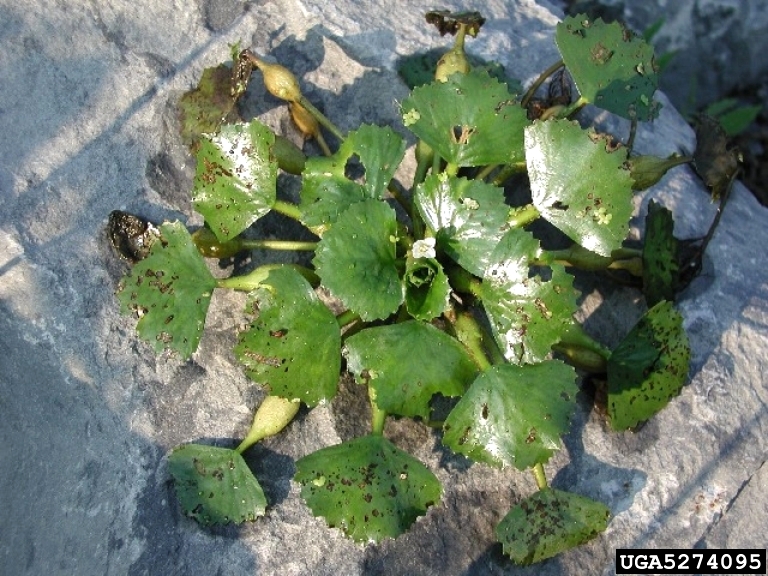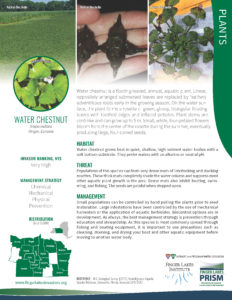Water Chestnut
Common Name: Water chestnut
Scientific Name: Trapa natans
Origin: Europe, Asia
Description
Water chestnut is a fast-growing, floating annual that can grow to 16 feet. It has feathery, submersed leaves and triangular, toothed, floating leaves that are glossy. Floating leaf stalks have visible bulbous bladders and commonly form rosettes. Flowers with four white petals normally bloom in July. The most distinctive trait of this plant is its thorny nutlets which mature in late summer. Reproduction occurs from these very sharp nutlets and from fragmentation of the rosettes.
Habitat
Water chestnut is found in quiet, high nutrient waters with soft substrate and neutral to alkaline pH.
Threat
Impenetrable mats of water chestnut can cover large expanses of water, altering water quality and clarity, eliminating the growth of native aquatic plants, and making boating, fishing, and swimming hazardous.
Management
Small populations can be controlled by hand pulling. Large infestations have been controlled in the Northeast by the use of mechanical harvesters or the application of aquatic herbicides.
Distribution: View Map








